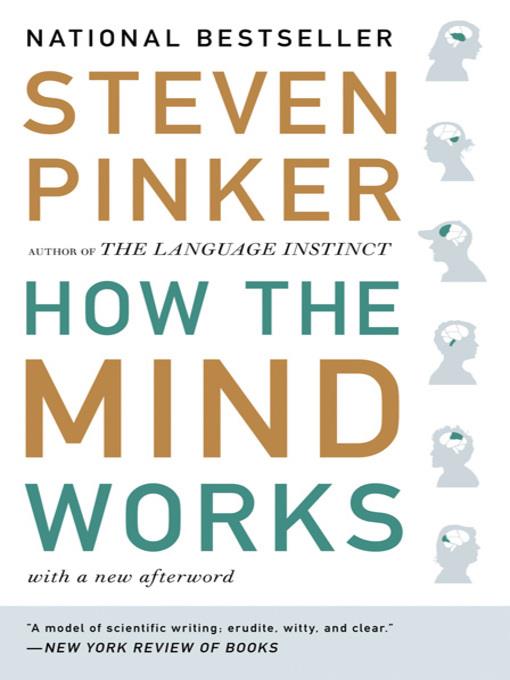
How the Mind Works
کتاب های مرتبط
- اطلاعات
- نقد و بررسی
- دیدگاه کاربران
نقد و بررسی

Starred review from December 30, 1996
In The Language Instinct (1994), Pinker demonstrated that the mind is structured for the learning and producing of language. Here, the director of the Center for Cognitive Neuroscience at MIT widens his scope, explaining the structure of the mind in much of its emotional, perceptive, sexual, problem-solving splendor. He masterfully consolidates decades of research into an integrated "computational theory of mind" that encompasses the range of activities we ascribe to our "mental organ." The theory posits modules (or automatically triggered "agents") made of massively interconnected neurons firing in patterned sequences. These agents act as information processors that break down complicated tasks as diverse as detecting visual edges, finding footholds and feeling disgust. A new twist is the proposition that this system, like language, developed via natural selection to solve specific problems confronting our hunting-and-gathering ancestors. The discussion is thus split between describing how the computation of specific tasks might actually work, as the chapter on vision does superbly, and less computationally demonstrable and thus less concrete discussions of how emotions are adapted to group relations, or of the sort of data one considers when choosing a mate. Though clearly written, the book will be mistaken by few for high literature ("so far this might not sound much better than the barf-up-your-baby theory"), and, while Pinker deliberately leaves many fundamental questions about the mind largely unanswered (such as the origins of sentience and the sense of self), he has a gift for making enormously complicated mechanisms-and human foibles-accessible, and he offers a truly comprehensive vision of how number crunching allowed the seeing, hearing and feeling human parts to evolve within a wondrous, modularized and goal-directed whole. Author tour.

November 15, 1997
MIT's Pinker, who received considerable acclaim for The Language Instinct (LJ 2/1/94), turns his attention to how the mind functions and how and why it evolved as it did. The author relies primarily on the computational theory of mind and the theory of the natural selection of replicators to explain how the mind perceives, reasons, interacts socially, experiences varied emotions, creates, and philosophizes. Drawing upon theory and research from a variety of disciplines (most notably cognitive science and evolutionary biology) and using the principle of "reverse-engineering," Pinker speculates on what the mind was designed to do and how it has evolved into a system of "psychological faculties or mental modules." His latest book is extraordinarily ambitious, often complex, occasionally tedious, frequently entertaining, and consistently challenging. Appropriate for academic and large public libraries.--Laurie Bartolini, MacMurray Coll. Lib., Jacksonville, Ill.

























دیدگاه کاربران